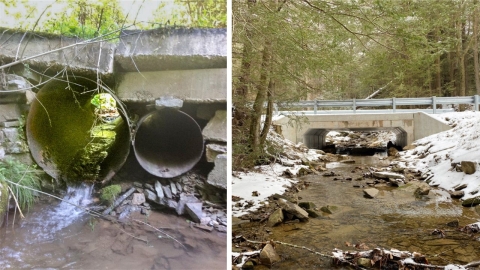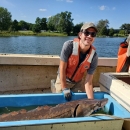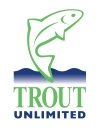States
Maryland, Virginia, West VirginiaThe Potomac Headwaters Fish Passage Restoration Project is a watershed scale project to reconnect over 195 miles of habitat for brook trout, American eel, and other aquatic species in the Potomac Headwaters of the Chesapeake Bay across the states of Maryland, Virginia, and West Virginia. The project is composed of up to 17 fish passage fish passage
Fish passage is the ability of fish or other aquatic species to move freely throughout their life to find food, reproduce, and complete their natural migration cycles. Millions of barriers to fish passage across the country are fragmenting habitat and leading to species declines. The U.S. Fish and Wildlife Service's National Fish Passage Program is working to reconnect watersheds to benefit both wildlife and people.
Learn more about fish passage barrier removal projects including culvert and low water bridge replacements, dam removal, and fish ladder installations. Specific project locations will be prioritized and selected in coordination with partners. These projects will assist in the reconnection of a 150 square mile super patch for native brook trout, and this increased connectivity will improve resiliency of brook trout populations by increasing access to cold water refugia and improving the species' ability to adapt to disturbances and stress. This project is part of the Potomac Headwaters River restoration effort, where an array of partners have been collectively working for over 15 years to reconnect high quality, limestone underlain, spring fed brook trout patches. Replacing failing and undersized road-stream crossings with new, properly sized infrastructure will improve public safety and ensure access to communities and recreational opportunities. Removal of obsolete and aging dams will also improve public safety. Several projects will be completed each year from 2022- 2024.
Quick Facts:
| Project Status | Active |
| Location | WV, VA, MD |
| NFPP Project Funding | $ 1,150,000 |
| Restoration Techniques | Culvert and low water bridge replacements, dam removal, and fish ladder installations |
| Accomplishments | 195 Stream Miles Reopened |
| Project Partner Lead | Trout Unlimited |
| Primary Species Benefited | Brook Trout |
The National Fish Passage Program combines technical expertise with a track record of success.
The National Fish Passage program works with local communities on a voluntary basis to restore rivers and conserve our nation’s aquatic resources by removing or bypassing barriers. These projects are designed to benefit both fish and people. Since 1999, the program has worked with over 2,000 local communities, Tribes, and private landowners to remove or bypass over 3,400 barriers to fish passage and reopen access to over 61,000 miles of upstream habitat for fish and other animals.
Fish passage project proposals can be initiated by any individual, organization, government, or agency. However, proposals must be submitted and completed in cooperation with a Fish and Wildlife Conservation Office. Please note that fish passage projects being used for federal or state compensatory mitigation or required by existing federal or state regulatory programs are not eligible for funding through the National Fish Passage Program.









